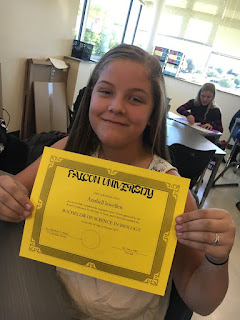Google Forms came to our rescue once again as we determined our design teams! Learners were asked about their most favorite and least favorite types of candy, which of course sparked interest in why we needed this data. Soon groups were created and the challenge was accepted!
Based on our reflection of the previous PBL, we decided that we needed to make a few changes on how we kicked off! On day 1, we gave each learner the entry document, which was a letter from the CEO of Hershey's, Volume & Surface Area Checkpoint of what the project entailed as well as a copy of our Unpacking the Standards document.
As students read through the letter, they annotated the documents and began to create their Knows & Needs to Know Charts. Because we included more details about what was going to be required as far as designing and creating both a 3D model of their new candy and wrapper, writing a persuasive letter, they had specific questions for our class charts!

During this learning opportunity, students had to determine the type of 3D figure and write the correct formula. We focused on triangular prisms, pyramids and threw in a few challenge problems with spheres and cones!
One of the standards that our PAP students had to cover was determining the relationship between the volume of a cone and a prism. This is one of my favorite lessons to teach during this unit! Learners used Flipgrid to explain how they determined the relationship between the volume of the cone and prism.

As we finished our Willy Wonka Workstations, students began to create their 3D models, using Tinkercad. Tinkercad is a web-based program that allows you to create 3D models and eventually print on a 3D printer.
One of our goals was to be intentional with allowing time for students to use the program prior to when we actually needed it in class. During the month of February, each 7th grade teacher posted the directions on how to use Tinkercad, as well as digital files for additional resources.
To ensure we knew what our Falcons would be experiencing, we also created items in Tinkercad and then used our 3D Poly Printer to create objects. It's so important to understand where our learners are and how it feels to be in their shoes, during a new learning opportunity!

Students used the days leading up to spring break to create their 3D candy models and loved being able to actually print it on our 3D printers! Of course we had a few curve balls thrown at as as far as the dimensions but we all figured it out and models were created.
 After spring break, it was time for our learners to focus on designing their wrapper for their new candy. In order to help them learn about all of the details that go into packaging, we reached out to a local company Virtual Packaging. Jordan Patterson, Director of Admissions, and Tara, the VP of Sales, came and spoke with our Falcons. Jordan and Tara did a great job on keeping our kids engaged as they shared graphs about how one's age determines the type of candy they prefer. Did you know that those older than 35 prefer chocolate over sour? It's not too shocking considering how much our middle schoolers love sour candy! Our Falcons also learned about various packaging materials that are used. Information learned from this presentation was used in several students persuasive letters and commercials!
After spring break, it was time for our learners to focus on designing their wrapper for their new candy. In order to help them learn about all of the details that go into packaging, we reached out to a local company Virtual Packaging. Jordan Patterson, Director of Admissions, and Tara, the VP of Sales, came and spoke with our Falcons. Jordan and Tara did a great job on keeping our kids engaged as they shared graphs about how one's age determines the type of candy they prefer. Did you know that those older than 35 prefer chocolate over sour? It's not too shocking considering how much our middle schoolers love sour candy! Our Falcons also learned about various packaging materials that are used. Information learned from this presentation was used in several students persuasive letters and commercials!
To build on our experience of Willy Wonka's candy factory, we created more workstations that focused on the wrappers of Willy Wonka's candy products, in another gallery walk! Because of the confidence and success of our Falcons, we were able to move faster through this activity which allowed for critical friends to be implemented (another goal from our last PBL!)
Another new idea that we implemented was having our Falcons write persuasive letters. We reached out to our 7th grade ELA teachers, who jumped on board with helping us! This was a huge learning opportunity for everyone as this was the first cross curricular lesson we had done, as well as making it digital. The kids felt extremely "grown up" and loved being able to tell the judges why their candy should be chosen!
Student Presentations:

































